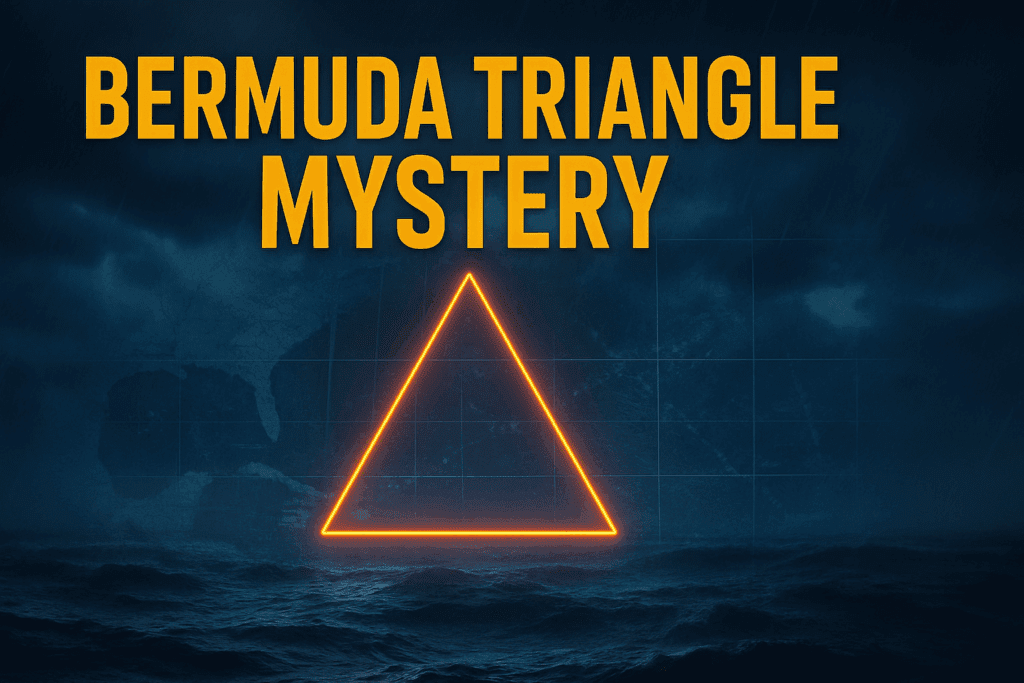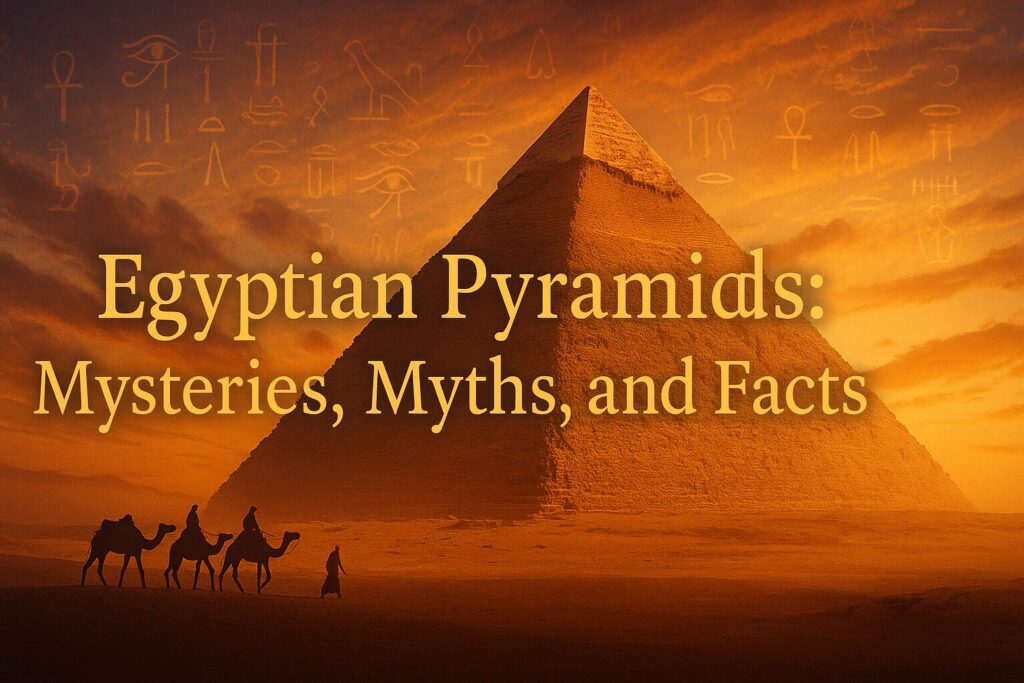Leviathan, the legendary sea monster from ancient myths and the Bible, symbolizes chaos, power, and mystery across cultures and history.
Table of Contents
Sure! Let’s begin your deeply informative article “Leviathan: The Legendary Sea Monster of Ancient Myths” written section by section in high-quality Markdown format. Here’s the first subheading:
Introduction
Across cultures and centuries, the sea has held both mystery and menace. Hidden in its depths are tales of monstrous beings capable of swallowing ships whole and terrifying the bravest of sailors. Among the most enduring of these legendary creatures is the Leviathan a colossal sea monster that has stirred imaginations since ancient times.
The Leviathan is more than just a terrifying beast; it is a symbol. In theology, it represents chaos. In literature, it serves as a metaphor for the unknowable. And in pop culture, it continues to inspire stories of titanic undersea horror and mystery. But what exactly is the Leviathan? Where did this myth originate, and could there be any truth behind it?
This article dives deep into the origins, interpretations, and legacy of the Leviathan unraveling how this mythic sea monster has shaped human imagination, religious symbolism, and even scientific speculation.
Let’s begin by uncovering its earliest roots in ancient texts and civilizations.
The Origins of Leviathan in Ancient Scriptures and Cultures
The Leviathan is not a product of just one culture it emerges from a rich tapestry of ancient civilizations, each weaving its own version of the monstrous sea serpent into myths, religions, and cosmologies. Long before modern stories of sea monsters thrilled readers, the concept of Leviathan evoked fear and fascination across the ancient world.
Mesopotamian and Near Eastern Roots
One of the oldest mythological precursors to Leviathan is Tiamat, a primordial chaos serpent or dragon from Mesopotamian mythology. According to the Babylonian creation epic, Enuma Elish, Tiamat represented the sea and was defeated by the storm god Marduk, who split her body to form the heavens and earth.
This myth set a template:
- A serpentine sea creature as a force of chaos.
- A divine hero or god defeating the beast to establish order.
These themes echo strongly in the Leviathan myth.
Leviathan in Ancient Canaanite Beliefs
In Canaanite mythology closely related to early Israelite beliefs the sea monster appears as Lotan, a multi-headed serpent defeated by the storm god Baal. This story mirrors the Biblical Leviathan, and scholars widely agree that the Hebrew Leviathan evolved from Lotan.
Lotan is described as:
- A seven-headed sea dragon.
- Residing in the chaotic waters of the deep.
- A symbol of disorder and cosmic threat.
These features were adopted into Hebrew tradition and later reshaped within a monotheistic framework.
Early Hebrew Scriptures
In early Jewish cosmology, the Leviathan represents not only chaos but also God’s supreme power to tame and control it. The Leviathan is:
- A singular, gigantic sea serpent created by God.
- Often depicted as being preserved for the end times, when it will be defeated or served as a feast for the righteous.
- A metaphor for divine dominance over chaos and evil.
Thus, from Mesopotamia to Canaan to Israel, the Leviathan has always embodied a deeper tension between chaos and order, between mortal fear and divine sovereignty.
Leviathan in the Bible: Symbolism and Interpretations
In the Bible, Leviathan is far more than a mere sea creature it is a symbol of chaos, divine judgment, and ultimate sovereignty. Across several books of the Old Testament, Leviathan appears in poetic, often terrifying detail. These descriptions have fueled centuries of theological debate and artistic inspiration.
Leviathan in the Book of Job
The most detailed depiction of Leviathan comes from Job 41, where God describes the creature in a speech meant to humble Job:
“Can you pull in Leviathan with a fishhook or tie down its tongue with a rope?… Nothing on earth is its equal a creature without fear.” (Job 41:1, 33)
This passage emphasizes:
- Leviathan’s invincibility, no human can tame or confront it.
- Its fearsome appearance, breathing fire and possessing impenetrable scales.
- A tone of divine challenge, reinforcing that only God has dominion over such forces.
Leviathan here symbolizes chaotic power that lies beyond human control. It’s not just a sea monster it’s a cosmic entity illustrating the limits of human wisdom.
Psalms and Isaiah: Chaos Defeated
Other references show Leviathan as a defeated enemy:
- Psalm 74:14 – “It was you who crushed the heads of Leviathan and gave it as food to the creatures of the desert.”
- Isaiah 27:1 – “In that day, the Lord will punish Leviathan the fleeing serpent… with his great, powerful sword.”
These passages symbolize:
- God’s triumph over chaos (Leviathan often stands for political enemies or evil forces).
- A future messianic victory, where Leviathan’s destruction marks divine justice.
Symbolic Interpretations
Over time, biblical scholars and theologians interpreted Leviathan in various ways:
- Jewish Midrash and Talmud: Leviathan will be served at a banquet for the righteous in the messianic age a symbol of reward and divine power.
- Christian theology: Some saw Leviathan as a representation of Satan or evil itself, to be vanquished at the end of time.
- Mystical readings: In Kabbalistic tradition, Leviathan is tied to divine mysteries, especially the tension between hiddenness and revelation.
Spiritual Meaning
Whether literal, metaphorical, or eschatological, Leviathan always points to the tremendous gulf between divine might and human limitation. It serves not only to frighten but also to awe, making it one of the Bible’s most enduring and enigmatic creatures.
Leviathan vs. Other Mythical Sea Creatures: Kraken, Jörmungandr, and More
The Leviathan is far from the only legendary sea monster to haunt the myths of human civilizations. From the frigid Norse seas to the Mediterranean, terrifying aquatic beasts have long symbolized danger, the unknown, and divine judgment. But what makes Leviathan unique, and how does it compare to others like the Kraken, Jörmungandr, and Cetus?
Leviathan vs. Kraken
The Kraken, from Scandinavian folklore, is often depicted as a giant octopus or squid capable of capsizing ships. Sailors from Norway and Iceland feared this creature during long voyages across the Atlantic.
Key Differences:
- Kraken is often animalistic and naturalistic it might be based on real sightings of giant squids.
- Leviathan is mythic and symbolic, described as a fire-breathing sea serpent with theological significance.
- Kraken was feared as a creature of the deep, while Leviathan was revered and feared as a cosmic force.
Leviathan vs. Jörmungandr
Jörmungandr, also known as the Midgard Serpent in Norse mythology, is a serpent so massive it encircles the entire world. A child of Loki, it is destined to fight Thor during Ragnarök the Norse apocalypse.
Similarities with Leviathan:
- Both are world-threatening serpents.
- Both are tied to end-time prophecies.
- Both symbolize chaos, though Jörmungandr is part of a dualistic struggle, whereas Leviathan represents chaos under God’s eventual control.
Leviathan vs. Cetus and Other Greco-Roman Monsters
In Greek mythology, Cetus is the sea monster sent by Poseidon to devour Andromeda. It is eventually slain by Perseus. Other similar sea creatures include Scylla and Charybdis, which represent narrow, dangerous straits.
Comparison:
- Greco-Roman monsters are often slain by heroes, symbolizing human triumph.
- Leviathan, in contrast, is invincible to man, and only God can tame or destroy it.
- The Leviathan’s story serves spiritual or cosmic lessons, not just heroic adventure.
Cultural Archetypes
These sea monsters serve different cultural purposes:
- Kraken: Reflects natural fears of the unknown ocean depths.
- Jörmungandr: Represents inevitable cosmic cycles of death and rebirth.
- Leviathan: Embodies the theological battle between chaos and divine order.
So while Leviathan shares traits with these legendary creatures immense size, aquatic domain, and symbolic danger its spiritual depth and scriptural roots give it a singular status among mythical monsters.
Depictions of Leviathan in Art, Literature, and Pop Culture
From illuminated manuscripts to blockbuster films, Leviathan has evolved from a Biblical sea serpent into a powerful cultural symbol of mystery, destruction, and the unknown. Artists, authors, and filmmakers have continuously reimagined the Leviathan, blending ancient fear with modern fascination.
Medieval and Renaissance Art
In Christian medieval art, Leviathan often appeared in illustrated Bibles and church carvings, depicted as:
- A serpentine dragon or whale-like creature.
- A monstrous figure being slain or subdued by God or angelic beings.
- Sometimes interpreted as the “mouth of Hell”, swallowing the damned especially in depictions of the Last Judgment.
These images emphasized Leviathan’s role as a spiritual adversary, linking it to Satan or ultimate evil.
Literature: From Hobbes to Modern Fantasy
Perhaps the most famous literary use of Leviathan is in Thomas Hobbes’ 1651 political work, Leviathan. Here, the name is used metaphorically to represent a powerful state an absolute authority that maintains order and suppresses chaos.
In Hobbes’ view:
- The Leviathan state is a necessary evil to prevent societal collapse.
- The title page even features an image of a giant crowned figure composed of thousands of people the body politic.
Other literary uses:
- Herman Melville’s Moby-Dick likens the whale to Leviathan, tapping into biblical and mythic imagery.
- In fantasy literature like C.S. Lewis’ The Voyage of the Dawn Treader or China Miéville’s Leviathan series, the creature often represents a mysterious power from the deep, sometimes divine, sometimes monstrous.
Film, Television, and Video Games
In modern media, Leviathan appears in numerous forms often retaining its traits of size, mystery, and deep-sea dominance.
Popular references include:
- Supernatural (TV series): Leviathans are ancient, pre-human monsters that even God fears.
- Final Fantasy (video game series): Leviathan is a recurring sea serpent god or summon creature, often associated with water magic.
- Mass Effect 3: The Leviathans are an ancient, telepathic alien species that once ruled the galaxy a reimagining of cosmic horror.
- Pacific Rim and Godzilla franchises: While not named Leviathan, the kaiju (giant sea monsters) owe their roots to the Leviathan archetype massive beings from the deep who challenge human supremacy.
Visual Symbolism
Across time, Leviathan is visually represented as:
- A whale-like beast, emphasizing raw power and depth.
- A serpent or dragon, symbolizing evil, temptation, or chaos.
- A shadowy, massive entity, barely seen but deeply felt tapping into fear of the unknown.
Its adaptability as a symbol from Biblical judgment to metaphor for power, evil, or nature has ensured Leviathan’s place in nearly every era’s cultural narrative.
Scientific Theories: Could Leviathan Have Been a Real Creature?
While Leviathan is rooted in mythology and scripture, many have asked: Could it have been inspired by a real creature? This question blends paleontology, marine biology, and historical speculation. The idea that Leviathan is based on a natural animal possibly now extinct is not as far-fetched as it sounds.
1. Real-Life Leviathans of the Sea
Some scientists and historians believe ancient sea monster myths were inspired by rare encounters with massive oceanic animals that were either misunderstood or exaggerated over time.
- Sperm whales: Growing over 60 feet, they can dive thousands of meters and are rarely seen in full. Their sudden appearances especially during breaches or fights may have inspired Leviathan-like legends.
- Giant squid (Architeuthis dux): These deep-sea creatures can reach up to 40–50 feet and have large eyes and curling tentacles, feeding the idea of a serpent-like monster.
- Prehistoric marine reptiles: Fossils of creatures like Mosasaurus or Pliosaurus show that enormous, carnivorous sea reptiles once ruled the oceans. A notable discovery:
- Livyatan melvillei, an extinct sperm whale species named after Leviathan, lived around 13 million years ago. It had giant teeth and preyed on other whales, closely fitting the image of a mythic beast.
2. Misinterpretations of Natural Phenomena
Many Leviathan sightings may have stemmed from misunderstood ocean events:
- Rogue waves or sea quakes shaking ships suddenly.
- Floating carcasses of decomposing whales or unknown creatures creating “serpent-like” shapes.
- Bioluminescent algae giving the illusion of glowing sea monsters at night.
Ancient sailors, lacking scientific knowledge, may have interpreted these rare phenomena through a mythic lens.
3. Paleontological Curiosity: Leviathan Snake
Though not directly linked to the Biblical Leviathan, paleontologists discovered a massive fossil snake species in 2009: Titanoboa cerrejonensis.
- It lived around 60 million years ago and reached up to 42 feet in length, weighing over a ton.
- Some myth enthusiasts draw parallels between Titanoboa and Leviathan, calling it a “leviathan snake” a name that captures the Biblical and monstrous association.
4. The “Leviathan Map” Theory
Some theorists even speculate that ancient mariners created symbolic maps sometimes referred to as “leviathan maps”marking dangerous, uncharted sea zones with images of monsters. While not actual proof of the creature’s existence, this reflects how deeply Leviathan-type myths were embedded into seafaring lore.
So while there is no concrete evidence that Leviathan was a real, singular creature, it’s entirely plausible that a mix of prehistoric fossils, misunderstood sightings, and real-life giants of the sea gave rise to its legend. The mystery and the possibility only add to its allure.
The Enduring Legacy of Leviathan in Modern Mythology and Symbolism
Even in today’s scientific, digitally connected world, Leviathan continues to thrive not just as a myth, but as a powerful symbol. Its presence is felt in literature, psychology, theology, politics, and even gaming culture. Why? Because Leviathan represents something timeless: our deepest fears, and our unending struggle to understand the unknown.
1. Symbol of Chaos and the Uncontrollable
In many modern interpretations, Leviathan embodies the uncontrollable forces of nature and existence:
- In climate discourse, it is used metaphorically to describe rising sea levels, catastrophic storms, or even the looming danger of oceanic collapse.
- In psychology, especially within Jungian analysis, Leviathan can be viewed as a representation of the shadow self the hidden, chaotic aspects of the psyche that must be acknowledged and integrated.
This taps into a core human tension: the need to face what we fear without being consumed by it.
2. Political and Philosophical Symbolism
Since Hobbes’ Leviathan, the name has been associated with powerful centralized governments or systems that maintain order through control.
- The “Leviathan state” has become a term in political theory describing massive government apparatus, sometimes critiqued as too dominant or impersonal.
- Libertarians, for example, often use the term negatively, equating Leviathan with government overreach.
In this context, the sea monster is reimagined not as a divine creation, but as a man-made behemoth that reflects both fear and necessity.
3. Pop Culture and Fantasy
In modern mythology and fantasy storytelling, Leviathan lives on as:
- A boss creature in video games, such as God of War, Final Fantasy, and Destiny, where it’s often enormous, mysterious, and tied to ancient lore.
- A mysterious cosmic being in science fiction such as the “Leviathan” alien race in Mass Effect 3 or in Lovecraftian horror narratives, where the creature lurks just outside human comprehension.
- A symbol of oceanic dominance in anime and manga like in Attack on Titan, where “Leviathan” subtly influences character naming and scale of destruction.
These examples continue to reinforce Leviathan as a metaphor for something larger than life something we can’t quite conquer or understand.
4. Religious Reimagining
Leviathan’s role in theology continues to evolve:
- In Judaism, it remains part of eschatological lore a creature reserved for the righteous in the World to Come.
- In Christian mysticism, Leviathan sometimes represents spiritual pride, a sin that isolates souls from grace.
- In modern spiritual movements, Leviathan is occasionally invoked as a symbol of deep transformation, chaos before rebirth.
Why Leviathan Endures
- It captures the essence of the unknown, especially in environments humans still can’t control like the ocean or the subconscious mind.
- It invites awe, not just fear.
- And crucially, Leviathan is flexible able to represent the personal, political, spiritual, and natural all at once.
Conclusion
The legend of Leviathan is far more than a tale of a monstrous sea creature lurking in the deep. It is a mirror reflecting humanity’s ancient fears, spiritual beliefs, and the timeless struggle between chaos and order. From Mesopotamian serpent gods to Biblical poetry, from medieval artworks to modern video games, Leviathan has transcended time and culture, constantly reshaped to fit the questions of each age.
Whether interpreted as:
- A mythological sea serpent,
- A symbol of divine judgment,
- A political metaphor, or
- A possible echo of real prehistoric beasts
Leviathan has remained a captivating figure. Its ambiguity is its strength. It is a monster and a metaphor, a story and a warning, a terror and a teacher.
In asking “Is Leviathan real or not?” we find that the more relevant truth lies not in fossil records or nautical maps, but in the enduring human need to name our fears and imagine what lies beyond the edge of the known world. Leviathan will likely never be found in any ocean trench but it will always dwell in the depths of our imagination.





